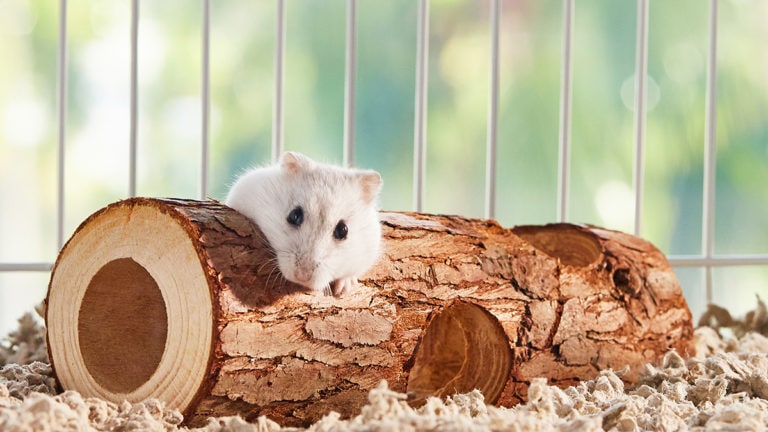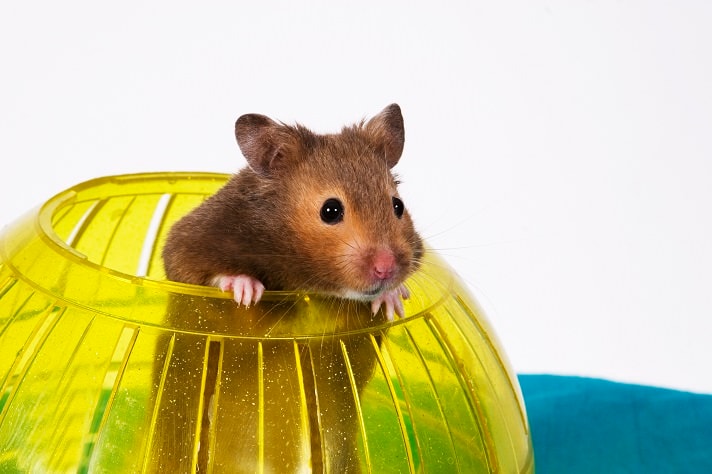Q.
I’m really grateful for your columns, because as a teenager I kept hamsters and could never find enough reliable information on how to care for them, certainly not in one place. I’m writing now because my own children want hamsters (I guess I’ve inspired them), and I’m using your columns as my guide. There’s something that’s come up that I don’t think you’ve talked about. My children are 9 and 12, and they each have their own rooms. I’ve promised I’ll let them adopt as many as three Syrian hamsters from a local rescue. I know my kids, and I know there’ll be rivalry about who cares for them. I’ve told them that Syrians must each have their own cage, and they’re saying they’ll keep one cage each in their bedroom and place one in the family room. I’d rather they not do this because, inevitably, I’m going to end up feeding and cleaning as much as they do (as I say, I know my kids). So for me, having all three in the family room seems a better idea. I also think it’s a better environment for them in general. But I’ll need to make a case to my children for putting all three cages in one room that’s not theirs, so I’m hoping you can back me up. What should my general guidelines be for cage placement? Thanks so much for all the great advice you’ve given us so far!
A.
Glad to help! You didn’t mention whether there are other pets in the house, but I’ll just go over some general “rules of thumb,” and you can apply what’s relevant to your situation. The rules for hamster cage placement really fall into three basic categories:
- Air
- Sound and light
- Human activity
What To Expect During The First Weeks Home
First, it helps to know how hamsters usually react when arriving at a new home. Acclimation may take as long as two weeks, no matter what. During this period of settlement the hamsters are bound to behave irregularly. Their sleeping and activity patterns will be a little haywire, they may pouch everything in their dishes to stash somewhere secure, or do other things that signal uncertainty about their new environment.
The first thing you can explain to your children is that hamsters seek regularity, so putting them in diverse settings, and especially moving the cages from place to place, could lead to their being uneasy at first, which will have an effect in the long term. Once they’re fully at ease in their new home (and you’ll know, because they’ll become very indifferent to everyday activity, and yet frequently seek human interaction — sticking their bellies up to the bars for a quick tickle, and doing all sorts of other irresistible things), they can take the cages into their rooms from time to time if that’s something they want to do.
Whether adopted from a rescue or purchased from a pet shop, almost any hamsters you bring home will be used to the scent of other hamsters about them, and so keeping the cages near each other will help stabilize them early on. At the same time, a young hamster that’s been living in a pet shop (and some rescues) will be coming from a world the atmosphere of which was a chaotic storm of scents, not just from other hamsters but from all sorts of animals, and therefore a world in which the young hamster has always had to be on guard.
If you do have other pets in the house, it would be best to assess the general flow of air and traffic, and try keep the hamsters upstream or completely isolated from where those other pets mainly stay, for instance where a dog’s bed or food are placed. For some reason I’ve observed that the presence of dogs can be slightly unnerving to hamsters until they’re settled (one would think cats would pose the greater threat, but in my experience they’re less perturbed by them). Keeping the scents limited to other hamsters and people will reduce your hamsters’ anxiety and have lasting benefits, making acclimation go that much faster.
Deciding Where To Place The Hamster Cage
Now that you know what to expect, what room should you choose for your hamster? As I said, there are three main points to consider:
1. Drafts can be a big problem.
Hamsters, in any situation that elevates their stress, will have less resistance to changes in temperature and airborne pathogens and toxins. So wherever you situate the cages there should be as little cross drafting as possible. One invisible danger is a fireplace or furnace, which may emit tiny bursts of carbon monoxide now and then. It may not be severe enough to be noticeable or a danger to fully grown humans, but due to the hamster’s outstanding olfactory sense and sensitive respiratory system, it may present a hazard. The same is true of nearby cleaning fluids and supplies. So basements, even finished basements, are generally not good settings for them. The rule here is that the air in their environment should be clean and circulating gently, but you should avoid any strong breezes, drafts or ambient odors. If you can smell anything at all, there are likely particulates wafting through that may present a danger to your new pets.
2. Light and sound are factors that work in both directions.
Regarding sound, as I say, your hamsters will be on an erratic schedule for a while after coming into the house. A hamster in a bedroom who runs on an exercise wheel straight through from midnight to dawn may be a significant problem on a school night. You may recall this from your own experience. This is another good case for the family room.
For the first week or so I recommend keeping your own sounds, and light surrounding the cages as well, in slightly “dimmed” mode. The hamsters’ nerves are going to be on hair triggers, and they’ll be sensitive to every sound. Until they know they’re surrounded by benevolent creatures and they needn’t defend themselves, try not to introduce that apprehension. A family room likely has plush furnishings to help absorb ambient sound. Even in a high-traffic area, if sound is muffled your hamsters will respond in kind with greater calmness and composure. You might even put folded towels beneath their cages to help absorb reverberating noises. They don’t see well, but they’re sensitive to light. The reason they forage at night in the wild, and spend their days underground, is that it makes them less vulnerable to predators. So avoid bright lights, which will just force them into the darkest, most obscure section of their cages, which is no fun for anyone!
3. Human activity can bring out a hamster’s personality.
I assume the family room is a place you all gather to read, watch TV, and so on. Many young hamsters love to “show off” when they know people are present. By placing them where you spend your evenings you’ll begin to establish a waking and playing pattern that will be truer to the Syrian’s natural habits. They tend to be more crepuscular than nocturnal, but Syrians can go either way. Better for you to fix the earlier time frame, the hours just after sundown, as their “prime time.”
Once you’ve gotten through this “honeymoon” period with them, they’ll turn a corner toward sociability and they won’t turn back. So I strongly recommend putting the cages at a height where they’re directly visible to you, rather than beneath your gaze. Birds are the natural enemy of all rodents, and so you looming above them sends a difficult message to overcome.
Sociable hamsters love being the center of attention, and this may be especially true of dwarf hamsters, if you should choose to adopt them at some time. And I sense you may — you’ve taken the time to study them even when that wasn’t easy, you’ve inspired your children’s interest in them, too. But most of all, I’ve come to learn that hamster people are hamster people for life. Good luck!
By: Martha Boden
Featured Image: Via digital_image_fan/Flickr
Share:










